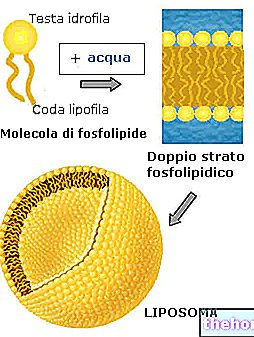See also: EPO and altitude training
L "erythropoietin
Erythropoietin, known to most by the acronym EPO, is a glycoprotein hormone (consisting of 193 amino acids of which the first 27 are lost upon secretion) which regulates the production of red blood cells (erythropoiesis). It is synthesized mainly by the cells of the kidney and to a small extent by the liver which becomes the main producer only during fetal life. The use of erythropoietin in the medical field allows to treat some types of anemia, such as that due to chronic renal failure.
What are its functions?
After being released into the circulation, erythropoietin interacts with specific receptors (Epor) present in the bone marrow, the most important hematopoietic organ in adults. In particular, the erythropoietin-receptor binding triggers a series of processes that lead to the formation of new red blood cells.
.jpg)
In our body there are no reserves of erythroprotein and its synthesis varies in relation to the metabolic demands. In particular, the production of EPO is regulated by the presence of oxygen in the tissues and minimally by its concentration in the serum. If the tissues do not receive enough oxygen, the kidneys increase the secretion of erythropoitein and vice versa. It is enough to close a subject for a few hours in a room with reduced presence of oxygen to significantly increase the production of erythropoietin.
Some hormones such as testosterone and thyroid hormones are also involved in this synthesis process.
Normal blood erythropoietin levels are approximately 2-25 mU / ml, but can increase 100-1000-fold in response to hypoxia
Synthetic erythropoietin
The gene that regulates erythropoietin production was first isolated in 1985.
EPO can be synthesized in the laboratory using the recombinant DNA technique. This method, fairly recent but expensive, allows you to extract a specific gene from the DNA of a cell and insert it into another cell that will produce large quantities of pure encoded substance. from that gene (in this case the epo).
Differences between endogenous and synthetic erythropoietin
Red blood cells are the result of a long process of cell division and differentiation.
Thanks to its function, erythropoietin is able to regulate these steps by selecting and maturing only the functional cells.
Erythropoietin produced in the laboratory is not able to make this selection. Consequently, following its administration, even imperfect cells are synthesized and released into the circulation, with a greater risk of blood and tumor pathologies.
Why do athletes use it?
A higher concentration of red blood cells in the blood improves the transport of oxygen to the tissues. Erythropoietin is therefore used above all in endurance sports to promote cellular aerobic processes and ensure greater resistance to fatigue.
Although some studies have attributed modest anabolic properties to erythropoietin (repair of muscle cells and increase in lean mass) its use in power sports is limited as it is not very effective in improving performance.
EPO and doping: dangers and side effects
As is known, red blood cells (RBCs) transport oxygen to the tissues and in endurance sports, such as cycling, cross-country skiing, etc., oxygen requirements are very high. For some time, therefore, methods have been investigated to increase the production of red blood cells in order to improve sports performance. The most recent strategy is based on the stimulatory role of erythropoietin on the synthesis of red blood cells by the bone marrow.
Erythropoietin of exogenous (synthetic) origin is much more harmful to health than the endogenous one secreted by the kidney.
We have already seen how the administration of this substance causes the production of abnormal red blood cells and increases the risk of developing blood and tumor pathologies (leukemia). However, there is also another reason why synthetic erythropoietin is very dangerous for the athlete's health: the increase in red blood cells decreases the fluidity of the blood, increasing the solid or corpuscular part (hematocrit). This increase in viscosity causes a rise in blood pressure (hypertension) and facilitates the formation of thrombus which, once formed, can occlude blood vessels (thrombosis) .This risk increases considerably in case of dehydration, as usually occurs in endurance races.
Cardiac arrhythmias, sudden death and brain damage (stroke) are also among the more serious side effects of this substance.
EPO, erythropoietin and doping
Doping blood transfusion
Aranesp
















.jpg)











